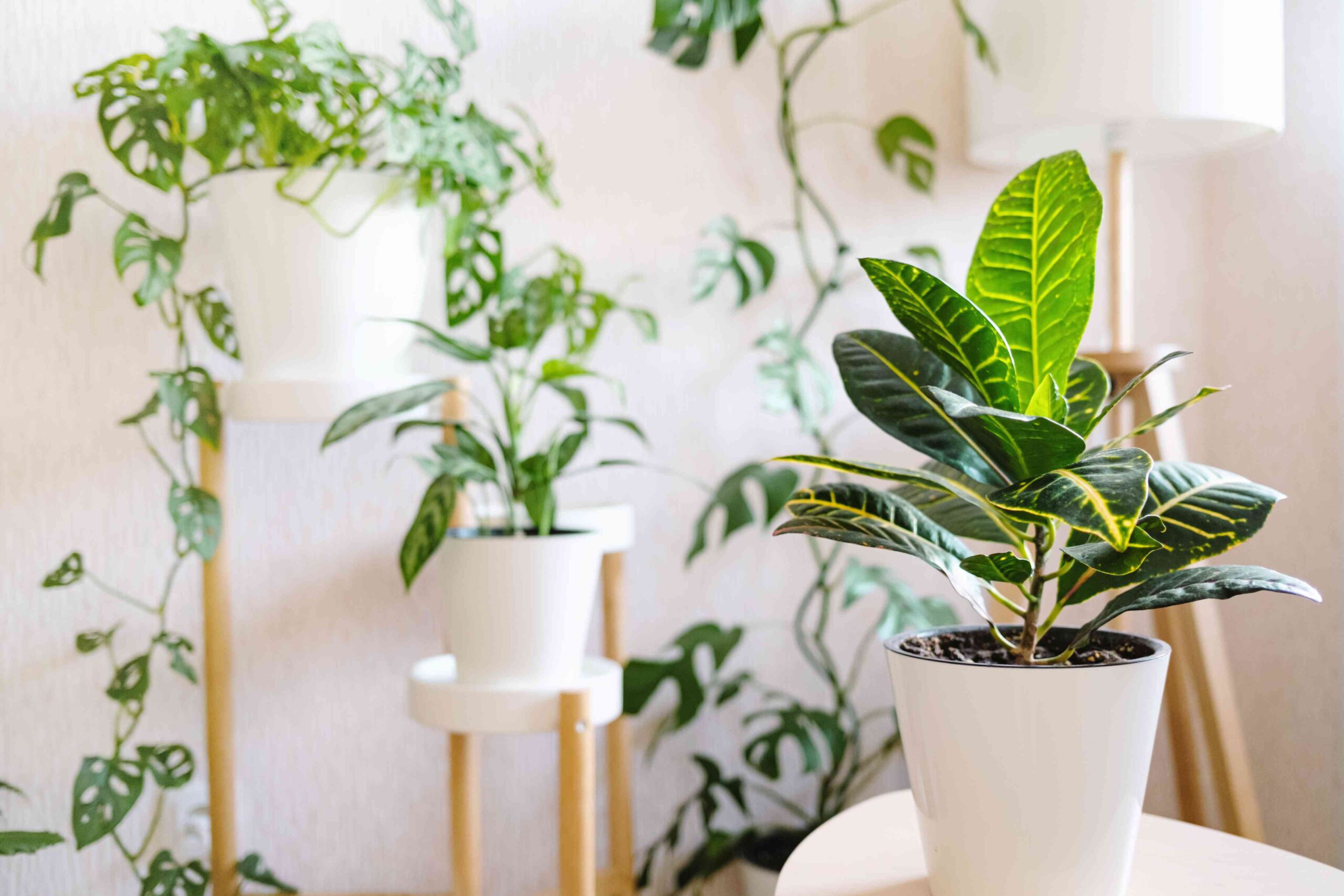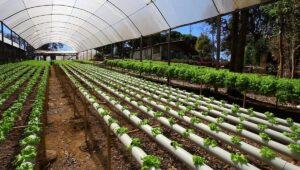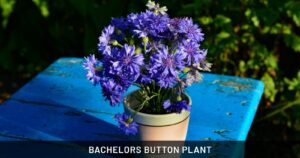Top Giant Indoor Plants That Never Die: A Complete Guide
When you’re looking to make a statement with your indoor greenery, giant plants can transform your space in ways that smaller options simply can’t. The good news is that many large indoor plants are surprisingly resilient, offering impressive size without demanding constant attention. In this comprehensive guide, we’ll explore magnificent jumbo houseplants that combine dramatic presence with remarkable durability—perfect for both experienced plant enthusiasts and those who might struggle to keep even a cactus alive.
Understanding What Makes Indoor Plants “Unkillable”
Before diving into specific plant recommendations, it’s important to understand what qualities make certain plants more resilient than others. The most durable indoor plants typically share several key characteristics that allow them to thrive despite occasional neglect or less-than-ideal conditions.
Drought tolerance stands at the top of this list—plants that can handle irregular watering schedules give you more flexibility in care routines. Additionally, tolerance to varying light conditions means you won’t need to constantly relocate your plant as seasons change. Finally, resistance to common pests and diseases reduces the need for specialized treatments and monitoring.
According to the United States Department of Agriculture (USDA), houseplants that originate from tropical understories or arid regions often demonstrate remarkable adaptability to indoor environments. The USDA’s research on plant adaptability suggests that specimens from these regions have evolved natural defense mechanisms that serve them well when brought indoors. More information can be found on their research portal: https://www.ars.usda.gov/research/publications/
What Makes a Plant “Giant”?
In the context of indoor plants, “giant” typically refers to specimens that can reach at least 4-6 feet tall at maturity when grown indoors. Many can grow even larger given the right conditions and sufficient time. These statement plants command attention, create dramatic focal points, and can effectively divide spaces without permanent fixtures—perfect for open-concept homes or large rooms that need visual anchoring.
The Environmental Benefits of Large Indoor Plants
Beyond their aesthetic appeal, large indoor plants offer significant environmental and health benefits that smaller plants simply can’t match due to their greater leaf surface area.
The Environmental Protection Agency (EPA) has conducted studies showing that indoor plants can significantly improve air quality by removing volatile organic compounds (VOCs) from the air. Larger plants, with their greater leaf surface area, can be particularly effective at this natural filtration. The EPA’s indoor air quality resources provide more information on this topic: https://www.epa.gov/indoor-air-quality-iaq
Additionally, large plants contribute to humidity regulation in dry indoor environments, particularly during winter months when heating systems can deplete moisture from the air. This natural humidification can help reduce respiratory irritation and keep skin from becoming excessively dry.

Let’s examine how different giant indoor plants compare in terms of their air-purifying capabilities:
Table 1: Air Purification Capacity of Popular Giant Indoor Plants
| Plant Name | VOCs Removed | Relative Purification Capacity | Best Placement for Air Quality |
|---|---|---|---|
| Fiddle Leaf Fig | Formaldehyde, Benzene, Trichloroethylene | High | Living rooms, Offices |
| Snake Plant | Benzene, Formaldehyde, Trichloroethylene, Xylene | Very High | Bedrooms, Bathrooms |
| Rubber Plant | Formaldehyde, Benzene | High | Living rooms, Entryways |
| Bird of Paradise | Xylene, Toluene | Medium | Living rooms, Sunrooms |
| ZZ Plant | Xylene, Toluene, Benzene | Medium-High | Any room, Offices |
| Monstera Deliciosa | Benzene, Formaldehyde | Medium | Living rooms, Offices |
| Dracaena Lisa | Benzene, Formaldehyde, Trichloroethylene | High | Any room, Hallways |
Top 10 Giant Indoor Plants That Are Nearly Impossible to Kill
Now, let’s explore the most impressive, low-maintenance large houseplants that combine dramatic presence with remarkable resilience.
1. Snake Plant (Dracaena trifasciata, formerly Sansevieria)
The snake plant may be known for its smaller varieties, but many people don’t realize it can grow into an impressive floor specimen reaching 3-4 feet tall. The cylindrical variety (Dracaena angolensis, formerly Sansevieria cylindrica) can grow even taller, with its distinctive spear-like leaves creating a striking architectural element.
Snake plants are practically invincible, surviving weeks without water and tolerating both bright and low light conditions. NASA’s Clean Air Study identified snake plants as exceptional air purifiers, making them as functional as they are decorative.
What makes snake plants particularly suitable for busy or forgetful plant owners is their preference for being left alone. Overwatering is far more likely to harm these plants than neglect. Their succulent-like qualities allow them to store water in their thick leaves, making them remarkably drought-resistant.
Care Tips:
- Water only when the soil is completely dry (typically every 3-6 weeks)
- Tolerate low light but grow faster in bright, indirect light
- Prefer temperatures between 65-85°F (18-29°C)
- Rarely need repotting—they actually prefer being somewhat root-bound
- Can live for decades with minimal care
2. ZZ Plant (Zamioculcas zamiifolia)
The ZZ plant has earned its nickname “Eternity Plant” for good reason. With glossy, dark green leaves growing on thick stems, it creates a bold silhouette that can reach up to 3-4 feet tall and wide in indoor settings. The Zamicro variety can grow even larger over time.
Native to drought-prone areas of Eastern Africa, ZZ plants have developed remarkable survival mechanisms. Their underground rhizomes store water, allowing them to thrive even when you forget to water them for weeks. They’re equally adaptable to light conditions, growing in everything from low light to bright indirect exposure.
ZZ plants are particularly valuable for high-traffic areas or offices where care might be inconsistent. Their waxy leaves resist dust and stay glossy with minimal maintenance, and they rarely attract pests or develop diseases.
Care Tips:
- Allow soil to dry completely between waterings
- Adapt to almost any light condition, though they grow fastest in bright, indirect light
- Prefer normal room temperatures (65-75°F/18-24°C)
- Grow slowly and rarely need repotting
- Can easily last 5+ years without division or significant maintenance
3. Rubber Plant (Ficus elastica)
For dramatic height and glossy foliage that makes a statement, few plants match the rubber plant. These impressive specimens can reach ceiling height (10+ feet) when given enough time and space, though they can be maintained at a more manageable 6-8 feet with occasional pruning.
The rubber plant’s thick, leathery leaves come in various colors, from deep burgundy to variegated cream and green, offering options to complement any interior design scheme. Their vertical growth habit makes them perfect for corners that need a dramatic touch without taking up too much floor space.
While slightly more demanding than snake plants or ZZ plants, rubber plants are still remarkably resilient. Their thick leaves store water, allowing them to withstand occasional neglect, and they’re less finicky about humidity than other ficus varieties.
Care Tips:
- Allow the top 2 inches of soil to dry between waterings
- Prefer bright, indirect light but adapt to medium light conditions
- Maintain temperatures between 60-80°F (15-27°C)
- Respond well to occasional dusting of leaves to maintain their glossy appearance
- Can be pruned to control height without harming the plant
4. Cast Iron Plant (Aspidistra elatior)
Living up to its name, the cast iron plant is virtually indestructible. Though slower-growing than some other options on this list, it can eventually reach 2-3 feet tall and wide, creating a substantial presence with its broad, arching dark green leaves.
The cast iron plant earned its reputation during the Victorian era when it thrived despite dim lighting and irregular care in coal-heated homes. Today, it remains one of the most adaptable houseplants available, tolerating deep shade, dry air, and temperature fluctuations that would kill most other species.
For basement apartments, north-facing rooms, or spaces with minimal natural light, the cast iron plant offers a large-scale solution where other plants would fail. Its resistance to pests and diseases further enhances its low-maintenance appeal.
Care Tips:
- Water sparingly, allowing soil to dry between waterings
- Survive in very low light conditions where most plants would fail
- Tolerate temperatures from 45-85°F (7-29°C)
- Grow slowly, rarely needing repotting
- Can last decades with minimal care
5. Bird of Paradise (Strelitzia nicolai)
For those who want a tropical statement piece with surprising durability, the white bird of paradise (Strelitzia nicolai) delivers dramatic impact. This impressive plant can reach 6-7 feet tall indoors, with massive paddle-shaped leaves creating a fan-like display reminiscent of banana trees.
Despite its exotic appearance, the bird of paradise is remarkably tough. Its thick, leathery leaves resist damage and drought, and the plant can recover quickly from occasional neglect. While it may not flower indoors as readily as in tropical settings, its architectural form provides more than enough visual interest.
The bird of paradise is perfect for creating a focal point in living rooms, entryways, or any space with a ceiling high enough to accommodate its impressive stature. Its vertical growth habit allows it to make a big impact without consuming excessive floor space.
Care Tips:
- Allow the top 2-3 inches of soil to dry between waterings
- Prefer bright, indirect light but tolerate medium light
- Maintain temperatures above 60°F (15°C)
- Benefit from occasional leaf cleaning to remove dust
- Can survive for many years as an indoor specimen
6. Dracaena Lisa (Dracaena fragrans ‘Lisa’)
The Dracaena Lisa, a cultivar of the corn plant, combines impressive height with exceptional durability. These tree-like plants can reach 6-10 feet tall indoors, with multiple canes topped by rosettes of strap-like leaves, creating a forest-like effect in your living space.
Dracaenas rank among the most adaptable indoor trees, tolerating low light, dry air, and irregular watering better than most large houseplants. Their slow growth rate means they won’t quickly outgrow their space, and their upright habit makes them perfect for tight corners or narrow spaces where width is limited but height is available.
The NASA Clean Air Study identified dracaenas as effective at removing multiple air pollutants, making them functional as well as decorative. Their longevity is equally impressive—well-maintained specimens can thrive for a decade or more indoors.
Care Tips:
- Allow soil to dry partially between waterings
- Adapt to low light but prefer bright, indirect light
- Maintain temperatures between 65-80°F (18-27°C)
- Can be pruned to maintain desired height without harming the plant
- Rarely troubled by pests or diseases

7. Fiddle Leaf Fig (Ficus lyrata)
While the fiddle leaf fig has a reputation for being somewhat finicky, established specimens can be surprisingly resilient once they adapt to their environment. These impressive trees can reach 6-10 feet tall indoors, with distinctive violin-shaped leaves creating a sculptural silhouette that’s become an interior design icon.
The key to success with fiddle leaf figs is consistency. Once they adapt to a specific location, light level, and watering routine, they can thrive for years with minimal intervention. Their large, leathery leaves store moisture, allowing them to recover from occasional neglect better than their reputation suggests.
For maximum impact in living rooms, entryways, or any space with high ceilings, few plants match the dramatic presence of a mature fiddle leaf fig. Their upright growth pattern means they command attention without consuming excessive floor space.
Care Tips:
- Water when the top 2 inches of soil are dry, typically every 7-10 days
- Prefer bright, indirect light but adapt to medium light once established
- Maintain temperatures between 65-75°F (18-24°C)
- Benefit from quarter turns every few weeks to promote even growth
- Can live 10+ years as indoor specimens with proper care
8. Monstera Deliciosa
The Swiss cheese plant or split-leaf philodendron has surged in popularity for good reason. These impressive climbers can reach 6-8 feet tall indoors, with their distinctive perforated leaves creating a lush, tropical atmosphere that transforms any space.
Despite their exotic appearance, monsteras are surprisingly tough. Their epiphytic nature (growing on trees in the wild) makes them adaptable to various conditions, and their aerial roots allow them to efficiently absorb moisture from the air when soil moisture is limited. They’re far more forgiving of inconsistent care than their trendy status might suggest.
Monsteras are perfect for spaces that need a softer, more organic presence than the more architectural plants on this list. Their naturally asymmetrical growth pattern creates visual interest from all angles, making them ideal room dividers in open-concept spaces.
Care Tips:
- Allow the top 2-3 inches of soil to dry between waterings
- Adapt to medium light but produce more distinctive leaf patterns in bright, indirect light
- Maintain temperatures between 65-85°F (18-29°C)
- Benefit from occasional dusting of leaves
- Can live indefinitely with proper care, becoming more impressive with age
9. Parlor Palm (Chamaedorea elegans)
For a touch of Victorian elegance combined with modern durability, the parlor palm delivers. While individual specimens grow slowly, they can eventually reach 4-6 feet tall in indoor settings, creating a graceful, feathery presence that softens architectural spaces.
The parlor palm earned its name during the Victorian era when it proved capable of surviving in dim, dry parlors despite minimal care. Today, it remains one of the most shade-tolerant palms available, making it perfect for north-facing rooms or offices with limited natural light.
Unlike many palms that demand high humidity and consistent moisture, the parlor palm tolerates average home conditions with remarkable grace. Its resistance to spider mites—which plague many other indoor palms—further enhances its low-maintenance appeal.
Care Tips:
- Keep soil lightly moist but never soggy
- Thrive in low to medium light conditions
- Prefer temperatures between 65-80°F (18-27°C)
- Grow slowly, rarely needing repotting
- Can live 10+ years as indoor specimens
10. Philodendron Hope Selloum (Thaumatophyllum bipinnatifidum)
For dramatic tropical impact combined with remarkable durability, few plants match the Philodendron Hope. This impressive specimen can reach 4-6 feet tall and wide indoors, with deeply lobed, glossy leaves creating a sculptural presence reminiscent of high-end botanical gardens.
Despite its exotic appearance, the Hope philodendron is surprisingly adaptable. Its thick stems and leathery leaves store water effectively, allowing it to withstand occasional neglect, and its tolerance for medium light makes it suitable for locations where more demanding tropicals would struggle.
For spaces that need a substantial floor plant with horizontal spread as well as height, the Hope philodendron delivers impressive scale. Its naturally symmetric growth habit creates a perfect hemispheric shape without pruning or training.
Care Tips:
- Allow the top inch of soil to dry between waterings
- Adapt to medium light but prefer bright, indirect light
- Maintain temperatures above 55°F (13°C)
- Rarely troubled by pests or diseases
- Can live indefinitely, becoming more impressive with age
Light Requirements: Understanding What Your Plant Really Needs
One of the most common misconceptions about large indoor plants is their light requirements. Let’s clarify what different light conditions actually mean to help you place your plants appropriately.
Table 2: Light Requirement Interpretation for Indoor Plants
| Light Level | What It Actually Means | Window Direction | Distance from Window |
|---|---|---|---|
| Low Light | No direct sun, but still bright enough to read by | North-facing or 8+ ft from East/West | 4-8 feet from window |
| Medium Light | Brief morning or late afternoon sun, or bright indirect light | East-facing or 4-8 ft from South/West | 2-4 feet from window |
| Bright Indirect | Very bright, but without direct sun rays | Near East/West windows or filtered South | 1-3 feet from window |
| Direct Light | Direct sunbeams fall on the plant | Unfiltered South/West windows | Directly in window or very close |
Understanding these distinctions helps prevent the common mistake of placing plants in insufficient light. Even “low light” plants need some light to thrive—true darkness will eventually weaken any plant.
The Centers for Disease Control and Prevention (CDC) notes that adequate natural light in living spaces contributes to overall wellbeing and proper circadian rhythms. Strategically placing large plants near windows allows you to enjoy their beauty while still allowing light penetration into your home. More information on healthy home environments can be found at: https://www.cdc.gov/niosh/topics/indoorenv/
Watering Strategies for Busy Plant Owners
Overwatering kills more indoor plants than underwatering, especially among the resilient varieties featured in this guide. Developing a sustainable watering strategy is essential for long-term success.
Rather than adhering to a strict calendar schedule, learn to recognize when your plants actually need water:
- Weight test: Lift the pot—if it feels light, it’s likely time to water.
- Finger test: Insert your finger 2 inches into the soil; if it’s dry at that depth, most plants on this list are ready for water.
- Leaf signals: Learn your plant’s specific drought indicators—slight drooping or dulling of leaf color often precedes serious stress.
Consider these approaches for maintaining healthy giant plants despite a busy schedule:
Self-Watering Options for Large Plants
For particularly large specimens, self-watering systems can provide insurance against forgetting to water:
- Water reservoirs: These containers hold excess water beneath the plant, allowing it to draw moisture as needed.
- Wicking systems: Simple cotton ropes can transfer water from a nearby container to your plant’s soil over time.
- Moisture-sensing gadgets: These devices alert you when soil moisture drops below optimal levels, taking the guesswork out of watering.
However, remember that many of the plants on this list prefer drying out between waterings. Self-watering systems should provide a safety net, not a constant supply of moisture.
Potting and Repotting Giant Houseplants
Large indoor plants present unique challenges when it comes to potting and eventual repotting. Here’s what you need to know:
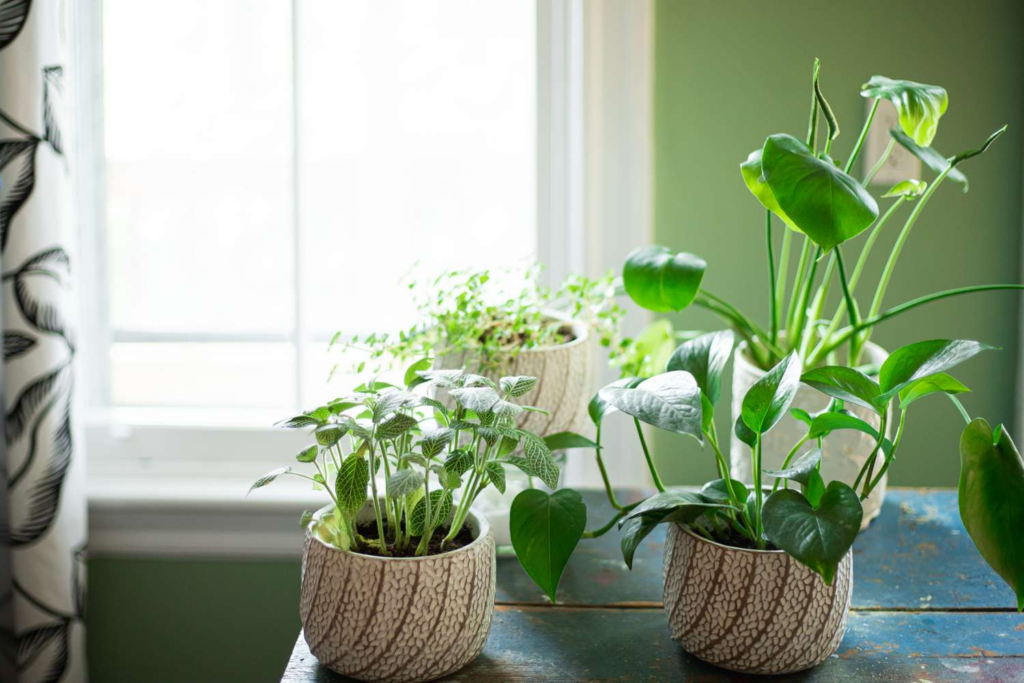
Choosing the Right Container
The container you select impacts not only your plant’s appearance but also its health and growth rate:
- Material matters: Porous materials like terracotta allow soil to dry more quickly—ideal for drought-tolerant specimens but requiring more frequent watering.
- Drainage is non-negotiable: Even the most drought-resistant plants need proper drainage to prevent root rot.
- Size considerations: Oversized pots hold excess moisture that can lead to root problems; as a general rule, choose containers 2-4 inches larger in diameter than the plant’s root ball.
- Weight factors: Large plants in soil become remarkably heavy—consider lightweight alternatives like plastic containers disguised within decorative cache pots.
When and How to Repot
Most giant houseplants grow relatively slowly and prefer being somewhat root-bound, requiring repotting less frequently than smaller species:
- Timing indicators: Repot when roots visibly circle the bottom of the pot or emerge from drainage holes, or when the plant requires watering unusually frequently.
- Size progression: Increase pot diameter by 2-4 inches maximum with each repotting to prevent overwatering issues.
- Technique tips: For particularly large specimens, repotting becomes a two-person job—one to hold the plant, another to manage the containers and soil.
Table 3: Repotting Frequency for Giant Indoor Plants
| Plant Type | Typical Repotting Frequency | Signs Repotting Is Needed | Best Season for Repotting |
|---|---|---|---|
| Snake Plant | Every 3-5 years | Roots emerging from drainage holes, pot breaking | Spring or Summer |
| ZZ Plant | Every 3-4 years | Plant becoming top-heavy, roots circling pot bottom | Spring or Summer |
| Rubber Plant | Every 2-3 years | Slowed growth, roots visible at soil surface | Spring |
| Cast Iron Plant | Every 4-5 years | Extremely root-bound, water runs straight through | Spring |
| Bird of Paradise | Every 18-24 months | Roots cracking pot, frequent wilting despite watering | Spring or early Summer |
| Dracaena Lisa | Every 2-3 years | Top-heavy plant, roots circling bottom | Spring |
| Fiddle Leaf Fig | Every 2 years | Roots emerging from drainage holes, stunted growth | Spring |
| Monstera | Every 2-3 years | Roots growing through drainage holes, pot-bound | Spring or early Summer |
| Parlor Palm | Every 2-3 years | Extremely root-bound, stunted growth | Spring |
| Philodendron Hope | Every 2-3 years | Roots emerging from drainage holes, pot lifting off surface | Spring |
Common Problems and Solutions for Giant Indoor Plants
Even the most resilient plants occasionally encounter challenges. Here’s how to address the most common issues that affect large indoor specimens:
Leaf Browning and Crispy Tips
This common problem typically indicates one of several issues:
- Underwatering: Most likely if accompanied by soil pulling away from the pot edges.
- Low humidity: Particularly common during winter heating season.
- Salt/mineral buildup: Caused by fertilizer accumulation or tap water minerals.
Solutions:
- Adjust watering frequency based on seasonal needs
- Increase humidity with pebble trays or humidifiers
- Flush soil thoroughly every few months to remove mineral buildup
- Consider filtered water if your tap water is particularly hard
Yellowing Leaves
Yellow leaves can indicate several different problems:
- Overwatering: The most common cause, especially if lower leaves yellow first
- Nutrient deficiencies: Particularly nitrogen, manifesting as uniform yellowing
- Natural aging: Lower/older leaves naturally yellow and drop as plants grow
Solutions:
- Allow soil to dry appropriately between waterings
- Apply balanced fertilizer at half the recommended strength during growing season
- Remove yellowed leaves that appear to be naturally aging
Pest Management for Large Plants
Large plants can be particularly challenging when pests strike. Here’s how to manage common invaders:
- Prevention: Regularly inspect new plants before bringing them home, and isolate them for 2-3 weeks
- Early intervention: Treat small infestations immediately with insecticidal soap or neem oil
- Scale approach: For large specimens, treat systematically, focusing on one section at a time
- Environmental controls: Maintain proper spacing between plants to prevent pest spread
Styling Your Space with Giant Plants
Large indoor plants offer unique decorating opportunities that smaller specimens simply can’t match:
Creating Impactful Plant Groupings
While each of these plants makes a statement alone, thoughtful grouping can create even more dramatic effects:
- Height variation: Combine floor plants of different heights to create visual rhythm
- Texture contrast: Pair large-leaved specimens like Monstera with feathery varieties like parlor palm
- Color coordination: Use plants with similar color schemes for cohesive displays
- Growth habit diversity: Mix upright, spreading, and cascading forms for natural-looking arrangements
Placement Strategies for Maximum Impact
Where you position your giant plants significantly affects both their health and their decorative impact:
- Natural spotlights: Place important specimens where natural light creates dramatic highlighting
- Space division: Use large plants to visually separate areas in open-concept spaces
- Scale consideration: Balance plant size with room dimensions—larger spaces can handle more dramatic specimens
- Traffic patterns: Ensure plant placement doesn’t interfere with natural movement through the space
Seasonal Care Adjustments
Even the most resilient indoor plants respond to seasonal changes. Understanding these rhythms helps maintain healthy specimens year-round:
Winter Adaptations
During winter months, most indoor plants enter a semi-dormant state requiring adjusted care:
- Reduced watering: Most plants on this list need significantly less water during winter
- Fertilizer cessation: Stop feeding entirely until spring growth resumes
- Light considerations: Move plants closer to windows to compensate for reduced daylight hours
- Temperature management: Keep plants away from drafts, heating vents, and cold windows
Summer Growth Management
The growing season brings its own set of considerations:
- Increased watering: Higher temperatures and more active growth increase water needs
- Fertilization schedule: Apply balanced fertilizer at half-strength every 4-6 weeks
- Humidity management: Some plants may need additional humidity during air-conditioned periods
- Growth spurts: Be prepared for significant size increases during the growing season
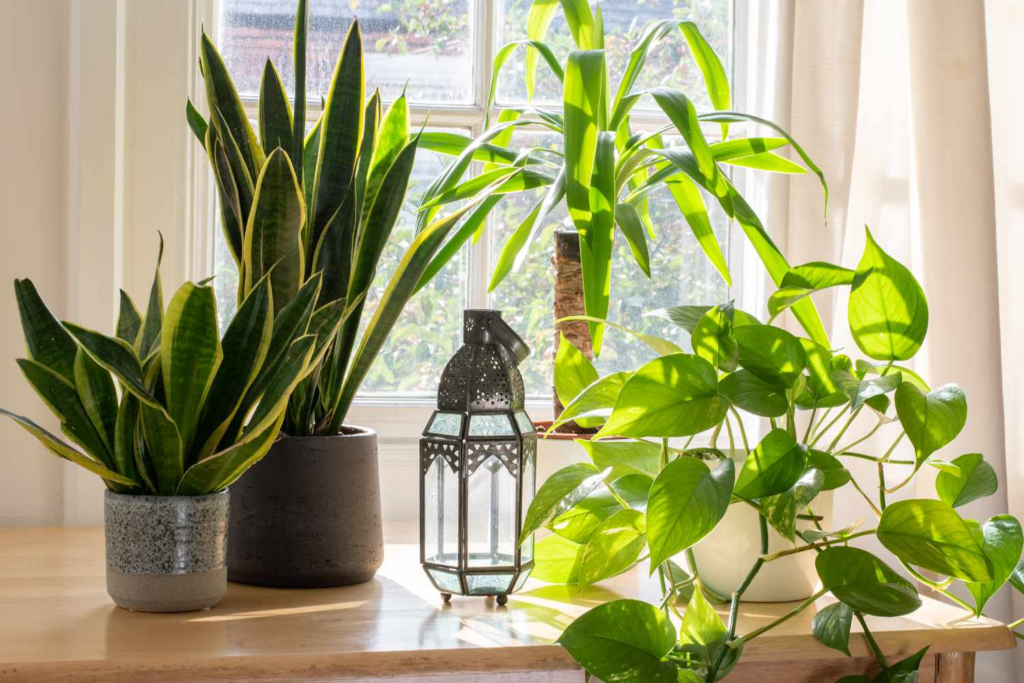
Long-Term Maintenance: Keeping Giants Under Control
As your plants mature, they may eventually outgrow their allocated space. Several strategies can help manage size without sacrificing plant health:
Pruning Techniques for Large Specimens
Different plants respond to pruning in different ways:
- Rubber plants and fiddle leaf figs: Can be topped to control height, with cut stems often branching
- Dracaenas: Respond well to dramatic height reduction, with new growth emerging below cuts
- Monsteras and philodendrons: Can be selectively pruned to control spread without affecting overall appearance
Propagation as Size Control
Many large houseplants can be propagated from pruned sections, allowing you to maintain the parent plant at a manageable size while creating new specimens:
- Stem cuttings: Work well for rubber plants, fiddle leaf figs, and monsteras
- Division: Effective for snake plants, ZZ plants, and some palms
- Air layering: Ideal for plants like rubber trees when standard cuttings prove challenging
The United States Botanic Garden offers excellent resources on propagation techniques for various houseplants. Their educational materials can help you expand your plant collection through proper propagation: https://www.usbg.gov/plants/plant-care
Conclusion: Living with Your Unkillable Giants
The large, resilient houseplants featured in this guide offer the perfect combination of dramatic impact and forgiving nature. Whether you travel frequently, occasionally forget to water, or simply prefer low-maintenance greenery, these botanical giants will transform your space with minimal demands in return.
Remember that even the most resilient plants benefit from occasional attention. A regular, if infrequent, care routine helps prevent problems before they develop and ensures your botanical investments continue to thrive for years or even decades.
By selecting plants that match your specific conditions and lifestyle, you can enjoy the benefits of living with impressive greenery without the stress of constant maintenance. The key lies in understanding each plant’s minimum requirements and ensuring those needs are met, even if you don’t provide optimal conditions at all times.
The resilient giants featured in this guide prove that impressive indoor plants don’t require expert-level care or constant attention. Their natural adaptability makes them perfect companions for busy modern lifestyles while their impressive stature ensures they make a lasting impact on your living environment.
